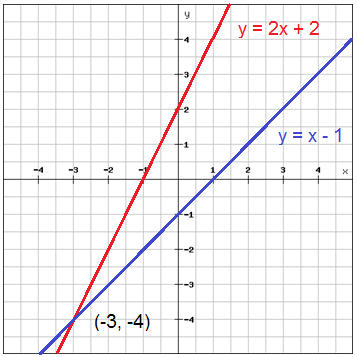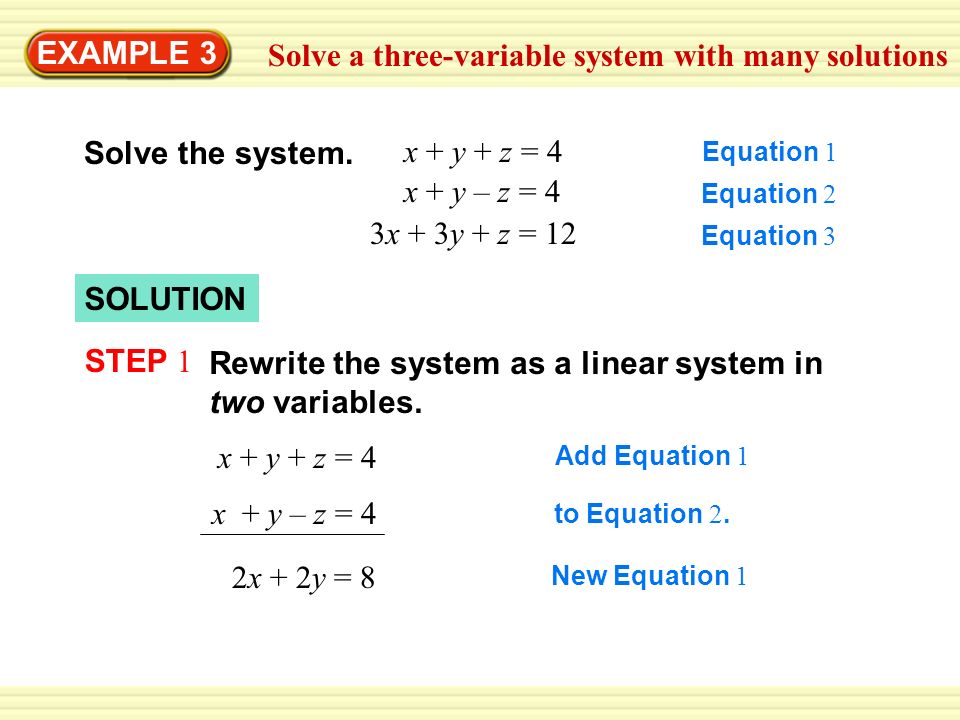

This means that there is no solution to the linear system we started with (there is no point that lies on both lines). Since the lines are parallel, they will never intersect.

The two lines x = 2 (blue) and x = -4 (red) are parallel, so they never intersect, and there is no solution to the linear system. The graph below confirms that the lines are parallel and have no solution (they never intersect). Since this equation is nonsense (it can never be true), this tells us that there is no solution to this system of linear equations. Now we add this modified equation to the second one: We begin by multiplying the first equation by 2 to get: Let’s say we want to solve the following system of linear equations: Example 1: Using Elimination To Show A Linear System Has No Solution Let’s take a look at some examples to see how this can happen. For example, after we simplify and combine like terms, we will get something like 0 = 1 or 2 = 5. When we attempt to solve a linear system with no solution, we will get a nonsense equation as a result. We’ll look at some examples of each case, starting with solving the system.
#System of equations solver 4 variables how to#
If the two equations have the same slope, but different y-intercepts, then the lines are parallel and there is no solution ( you can get a refresher on how to tell when two lines are parallel in my article here).


We’ll start with linear equations in 2 variables with no solution. The image below summarizes the 3 possible cases for the solutions for a system of 2 linear equations in 2 variables.Ī system of 2 linear equations in 2 variables has no solution when the two lines have the same slope and different y-intercepts (that is, they are parallel and never intersect).Ī system of equations in 2, 3, or more variables can have no solution. This means that there is no point that can satisfy all of the equations at the same time. Systems Of Linear Equations With No SolutionĪ system of linear equations can have no solution if the equations are inconsistent. We’ll also look at some examples of linear systems with no solution in 2 variables and in 3 variables. In this article, we’ll talk about how you can tell that a system of linear equations has no solution. Of course, a system of three equations in three variables has no solution if there is no point where all three planes intersect. Visually, the lines never intersect on a graph, since they have the same slope but different y-intercepts. From an algebra standpoint, this means that we get a false equation when solving the system. So, when does a system of linear equations have no solution? A system of two linear equations in two variables has no solution when the two lines are parallel. However, it is also possible that a linear system will have no solution. When working with systems of linear equations, we often see one or infinitely many solutions.


 0 kommentar(er)
0 kommentar(er)
